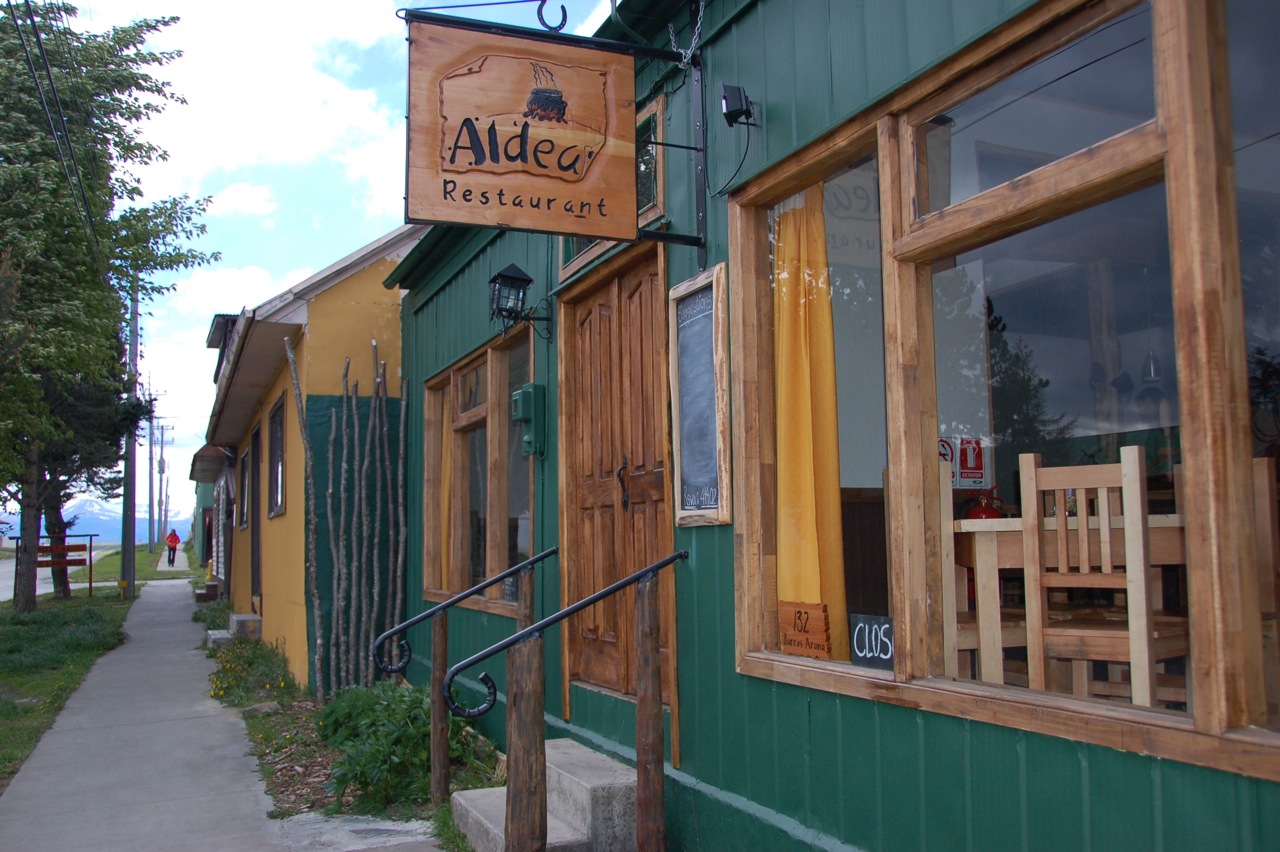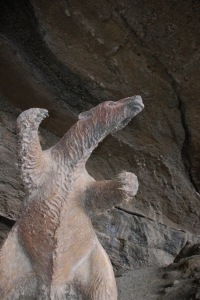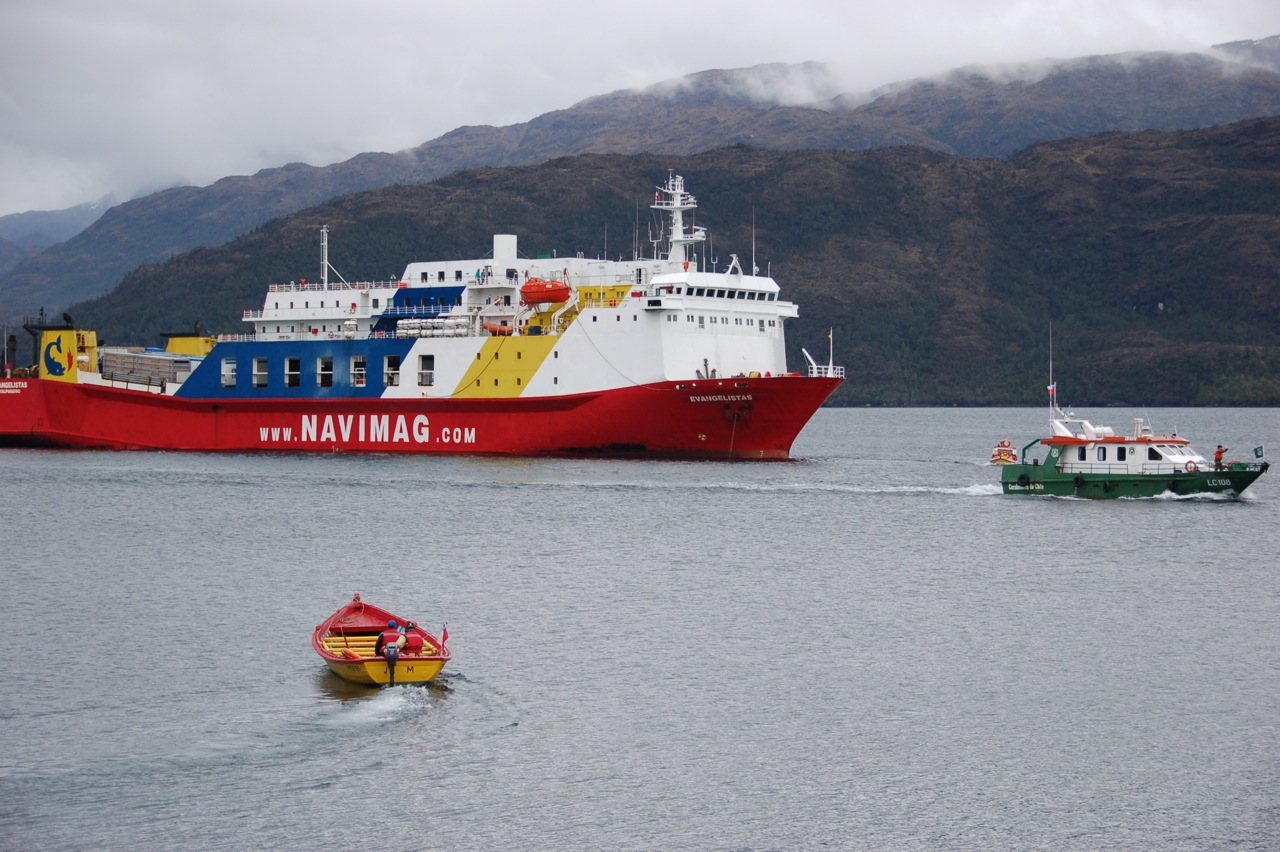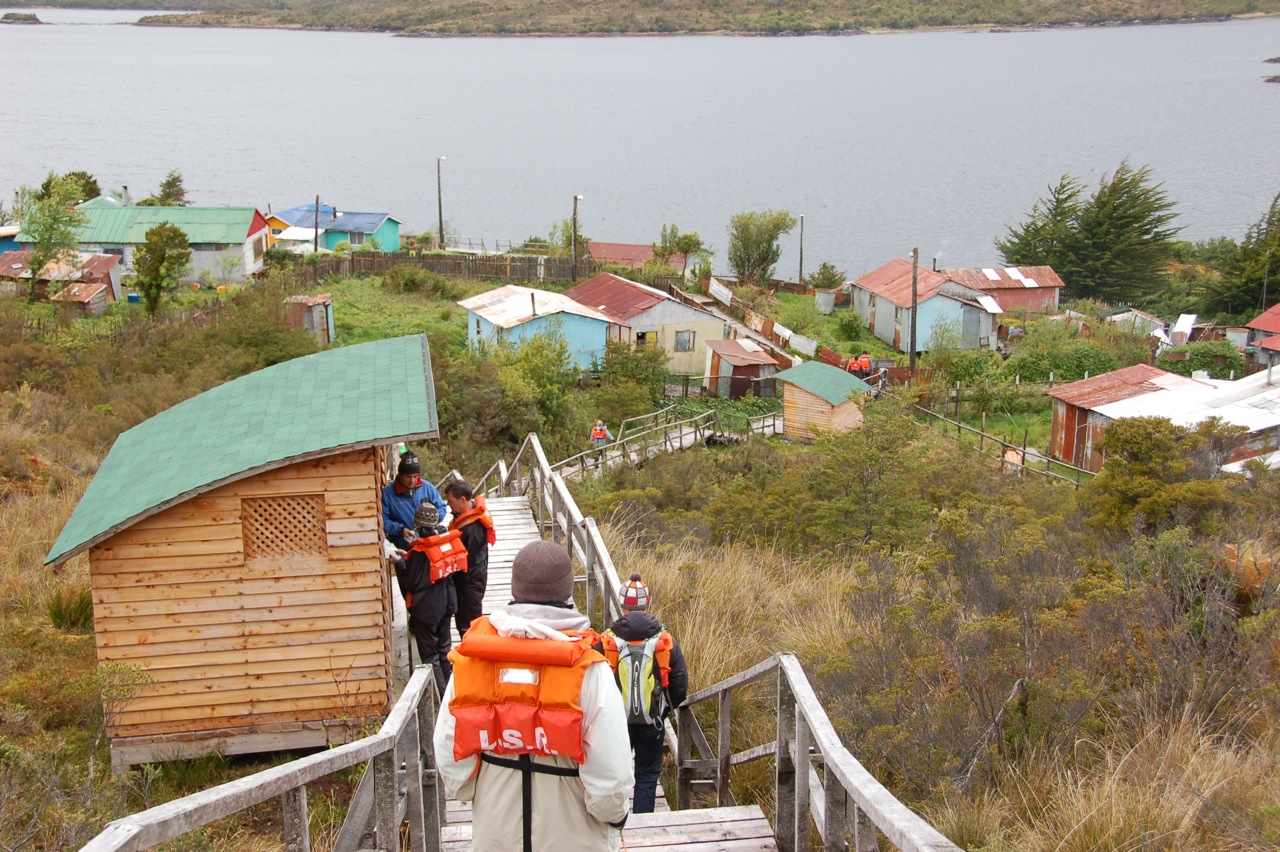A quiet, catch-up morning on Navimag is filled with reading and writing. At 1:30 pm, the boat’s terminal port, Puerto Natales, comes into view. After a brief view of the sun, the weather has turned and through the intercom we are informed the wind is blowing at 40 knots and the authorities have denied permission to dock. We wait. Twenty minutes later it is sunny again and we disembark.
A short cab ride takes us to the Alcazar Hostal. Simple, yet neat, the hostal has a small restaurant next door. The afternoon is spent sending e-mail, taking the laundry to the lavanderia, and refurbishing supplies. We purchase canned sardines and tuna, olives, cherries, and 70% chocolate at a local market.
The next morning we walk to the town center, shop for fruit, and hang out at the hostel until we are picked up by the EcoCamp shuttle at 2 pm. Lunch is provided at the Aldea Restaurant (my son and I have salad, hake with vegetables, and bowl of fruit) where we meet a couple from Holland, a couple from Switzerland, and a lady from Tasmania - her husband had arrived at EcoCamp several days previously, but, due to an airline strike in Argentina, she had been delayed in Buenos Aires.
On the way to the Torres del Paine (Towers of Blue) National Park, we stop at Milodon cave (Cueva del Milodon), popularized by Bruce Chatwin's In Patagonia. The large cave, named for the extinct giant sloth discovered there, was occupied by Paleo-Americans 12,000 years ago. From there we travel into the Park, and by late afternoon, reach EcoCamp.
Dr. John















